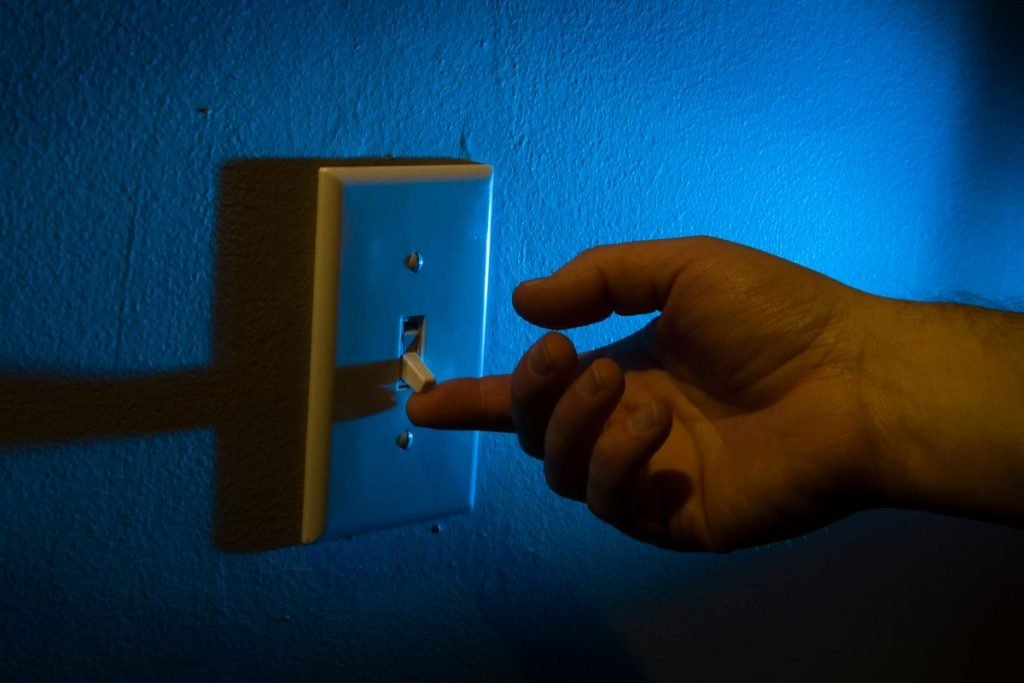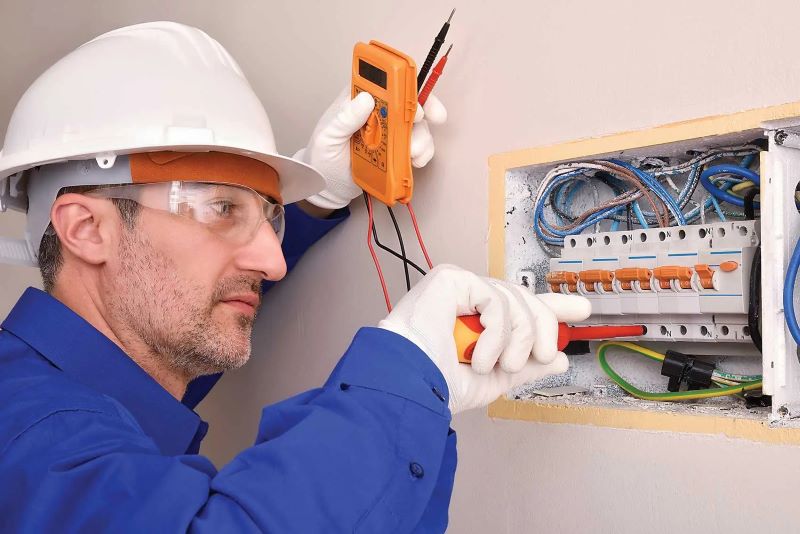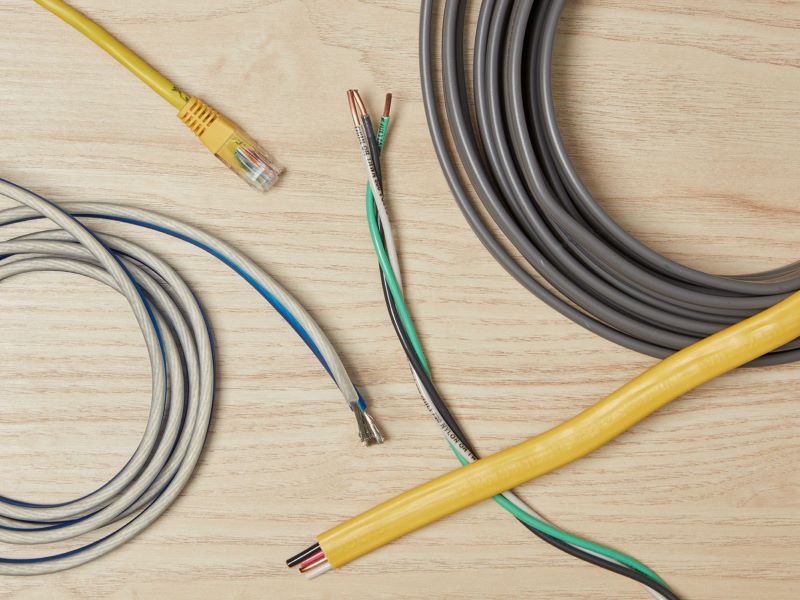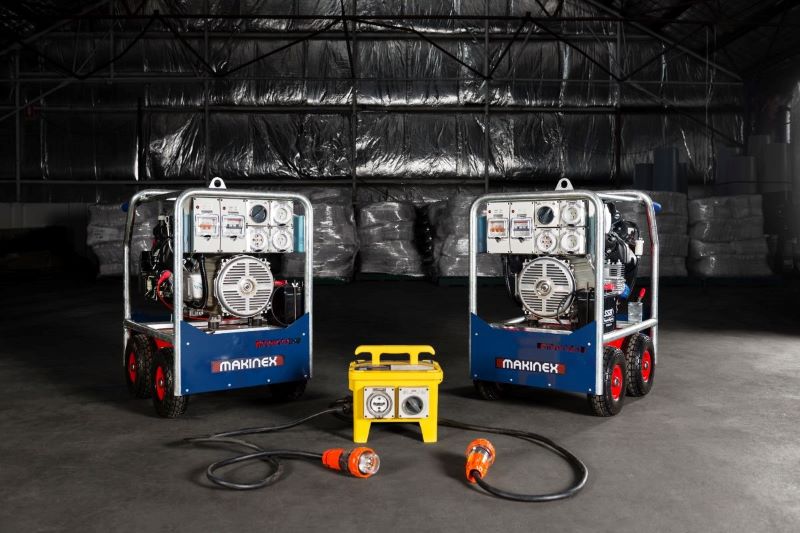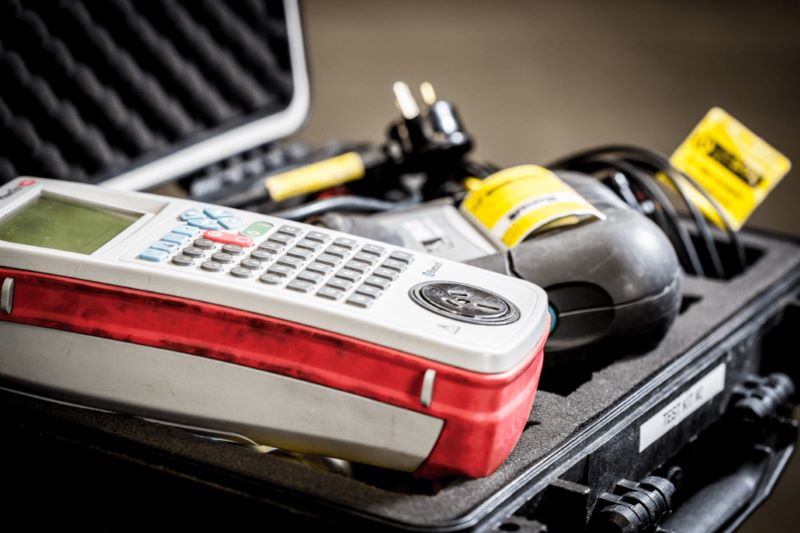Table of Contents
Experiencing electric shocks when touching a light switch is something that many people come across.
While these shocks are usually harmless, if they happen frequently, they could be a sign of electrical issues that need professional attention. Knowing what causes these shocks and the potential risks involved highlights the importance of following electrical safety guidelines and taking quick action to prevent any possible dangers. Check out rewiring Brighton if you need one.
Common Causes of Electric Shocks
Electric shocks can happen for various reasons. One common cause is static electricity builds up and discharges when someone touches a surface.
Another reason is faulty light switches with exposed wires or improper insulation that can lead to electric shocks. Outdated electrical switches may not meet current safety standards, increasing the risk of shocks.
Faulty wiring in appliances or electrical devices can also result in electric shocks when touched. Water can also increase the chances of getting shocked when dealing with electricity.
It is important to address these issues promptly to ensure safety. If someone experiences frequent electric shocks or suspects wiring problems, consulting an electrician for inspection and repairs is advisable. Following safety measures, such as avoiding water near electrical sources and using insulated tools when working with wires, can help reduce the risk of harmful electric shocks.
Effects of Static Discharge on Individuals
Static discharge can affect people differently depending on factors like body size and susceptibility to rare conditions triggered by electrostatic shocks. Static discharge happens when extra electric charges are released between two objects, often felt as a shock when we touch things.
- Body size can make a difference in how strong the shock feels, with smaller people often feeling a more intense impact.
- People vary in how susceptible they are to rare conditions triggered by electrostatic shocks, which can lead to symptoms like cardiac arrhythmia and seizures.
- Metal surfaces can make a shock feel stronger because of how well they conduct electricity, changing how a person experiences the discharge.
- If someone is constantly getting shocked by static electricity, it is important to take any nerve system damage seriously, as it could have lasting effects on health.
- It is a good idea to have qualified professionals look into recurring shocks, as they might point to problems like faulty wiring or malfunctioning electrical circuits.
Understanding these details about how static discharge affects people can help us take the right steps to reduce any risks that come with being exposed to electrical currents frequently, whether it is from light switch shocks or other sources of static electricity.
Significance of Recurring Shocks
Experiencing repeated electric shocks could signal some issues with the electrical system, highlighting the importance of having it checked and maintained by professionals. If people are frequently getting shocked when they touch electrical devices or switches, it is a red flag for the safety of the electrical setup.
Faulty appliances can greatly increase the chances of shock incidents due to issues with insulation or internal wiring. Malfunctioning electrical devices can also be dangerous as they expose individuals to varying levels of electrical currents. Additionally, static shocks may indicate inadequate grounding or an excess of electrical energy in the environment. By addressing these factors through professional inspections and necessary repairs, individuals can effectively reduce the risks associated with frequent electric shocks.
Rare Conditions Triggered by Shocks
Uncommon medical conditions can be triggered by electrical shocks, which can lead to serious health complications like cardiac arrhythmia and seizures. It is important to be aware of the potential risks that these rare reactions can pose when someone experiences an electric shock. How the human body responds to electrical currents passing through it can vary depending on the strength of the current and the individual’s physical traits.
Faulty switches or other electrical components can be sources of electric shock hazards in homes or businesses. If these components are faulty, they can allow unintentional current to flow through a person upon contact, resulting in a shock. Licensed electricians play a crucial role in identifying and fixing such issues to ensure electrical safety in a given space.
If shocks trigger uncommon medical conditions, it is vital to seek immediate medical attention. Knowing the significance of proper grounding techniques, such as using ground wires in electrical setups, can help reduce the risks of electric shocks triggering these rare conditions. Following best practices in electrical safety and promptly addressing faulty switches or components can help individuals lower the chances of experiencing negative effects from electric shocks.
Potential Delayed Reactions to Shocks
When someone gets shocked by electricity, they might not immediately show symptoms like irregular heartbeats or seizures. This highlights how important it is to stay alert and seek medical help quickly if there’s a chance of electrocution. Different things can cause delayed reactions to electric shocks, like loose wires, damaged wiring, unstable power flows, and metal screws touching live wires.
- Loose wires: Wires that aren’t secured properly can make the electric current unstable and increase the risk of getting shocked.
- Damaged wiring: Exposed wires are dangerous because they allow direct contact with the electricity.
- Unstable power flows: Changes in the electricity’s flow through an outlet can lead to unexpected shocks when touching switches or appliances.
- Metal screws touching live wires: If metal screws touch live wires due to poor insulation or bad installation, they can conduct electricity and raise the risk of getting shocked.
- Electrical outlet problems: Faulty outlets or sockets may have hidden wiring issues that could cause delayed negative reactions after an electric shock.
It is important to understand the reasons behind delayed reactions to electric shocks so that we can stay safe and respond quickly if something happens. Having qualified professionals regularly check electrical systems can help spot and fix these risks before they become serious problems.
Monitoring Symptoms Post-Electrical Shock
Keeping a close eye on symptoms is essential after experiencing an electrical shock. Look out for signs such as irregular heartbeats or seizures to address any potential nervous system damage immediately.
Knowing the dangers of electric shocks and their impact on health is crucial. Electrical appliances can be a source of shocks, so it is important to be cautious. If you’re unsure, it is a good idea to consult an electrician to check your electrical circuits.
If you notice blue sparks during an electrical event, it could indicate a more serious issue that needs immediate attention.
Electric shocks can have lasting effects beyond the initial incident. Keep an eye out for less obvious symptoms like heart problems or neurological issues. Seeking help from healthcare professionals and electricians after an electric shock ensures a thorough evaluation and necessary repairs or treatments are done promptly. Stay vigilant about potential symptoms after an electrical shock to protect your well-being and address any underlying problems effectively.
Necessary Actions After Getting Shocked
Experiencing an electrical shock can be scary, but it is important to act quickly to stay safe. If you keep getting shocked, it is a good idea to call a professional electrician to figure out what’s going on and prevent more shocks. If you notice that light switches are damaged or look like they’re in bad shape, you can cover them with tape to lower the risk of accidents.
Before you try to fix any electrical devices or switches, make sure to turn off the power in that area to avoid more shocks. Always wear protective gear when dealing with electricity and be careful when handling metal objects near water.
One way to reduce the chances of getting shocked is to use grounding techniques, which let extra electricity flow safely into the ground. Getting a commercial electrician to check your electrical system regularly can help catch problems early and stop future shocks.
It is important to teach everyone in your home how to stay safe around electricity. Taking these steps after getting shocked can help prevent more accidents and keep your living space safe.
Precautionary Measures and Preventive Steps
Preventive steps like regularly checking and maintaining electrical switches, avoiding damaged devices, using grounding techniques, getting professional assessments of electrical systems, and educating people on safety protocols can help lower the risk of electric shocks.
- Avoid Metal Surfaces: Directly touching metal surfaces can increase the chances of electric shocks because metal conducts electricity.
- Proper Wiring Grounding: Ensuring that wiring is properly grounded can decrease the likelihood of electric shock incidents.
- Childproof Outlets: Installing child safety covers provides an extra layer of protection for outlets and switches.
- Circuit Protection: Using devices like circuit breakers can prevent excessive electric currents.
- Consulting an Electrician: It’s important to contact an electrician service in Brighton promptly if you experience a shock or notice issues with power outlets.
By following these preventive measures, overall household safety can be improved by reducing the risk of accidental exposure to dangerous electric charges. Prioritizing safety and addressing potential sources of electricity-related risks can create a safer living environment.
Regular assessments by professionals can help identify and resolve any underlying electrical issues before they become dangerous.
